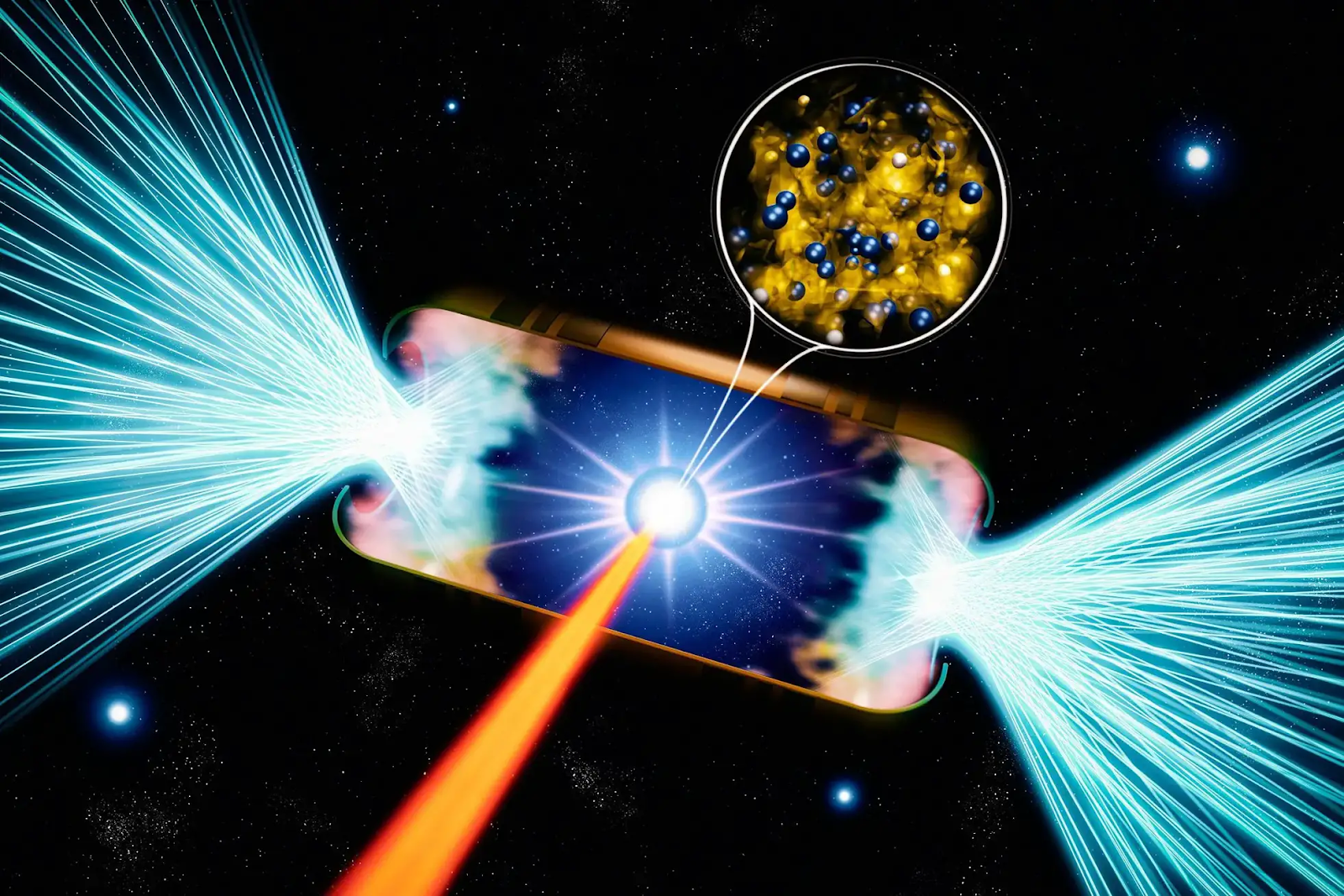The things that keep the fusion going on in the sun are the pressure and temperature. When researchers want to make a fusion reaction on Earth they must compensate for the pressure of the sun's core by raising the temperature higher than it's in the middle of the sun.
In those tests are used extremely powerful lasers. Some of them use ion chambers. And other lasers stress those ions with radiation pulses. In ion lasers, the ions that send radiation emission to the laser elements can be outside the element, or inside the element.
An ion laser where ions are inside the elements is similar to a carbon monoxide laser. But the gas is replaced by ions.
Also, the weaker lasers can input energy into the stronger laser rays. In those systems, the power of the laser rays is far higher than regular lasers.
Pressure-driven ionization is one of the reasons why even small stars can maintain fusion reactions. The ion-anion fusion is one of the most promising things, how to make a fusion reaction. The reason for that is anion and ion are pulling each other together.
"Scientists have conducted laboratory experiments at the National Ignition Facility at Lawrence Livermore National Laboratory that generated the extreme compressions necessary for pressure-driven ionization. Their research provides new insights for atomic physics at gigabar pressures, which benefits astrophysics and nuclear fusion research. Credit: Graphic illustration by Greg Stewart/SLAC National Accelerator Laboratory; inset by Jan Vorberger/Helmholtz-Zentrum Dresden-Rossendorf" (ScitechDaily.com/World’s Most Powerful Laser Reveals Secrets of Pressure-Driven Ionization in Stars and Nuclear Fusion)
During Fusion tests, lasers create extremely hot plasma. That thing is very well under control. But the next part is more problematic. How to make those atoms melt together? In tokamak-type "torus" reactors the plasma is homogenous because all its particles have the same polarity. That means the magnetic field must push that ion or anion ring into one entirety.
The plasma must not touch the wall of the reactor. And that makes the ion-anion fusion very complicated in the tokamak. The magnetic field will make the plasma hover in the tokamak. And if some ions and anions mean the magnetic field pushes another type of particle to the wall of that reactor.
Cold fusion is used every day in places like CERN and Fermilab. In those tests atoms or ions and anions are shot against each other. And during those processes, researchers create new synthetic elements.
The anion-ion fusion makes so-called cold fusion possible. But in that version, the system uses linear particle accelerators for making enough impact energy that the anions and ions are melting to the new elements. This thing is used to make new elements in particle accelerators. But the problem is how to make that fusion create more energy than it uses.
There is the possibility that two ion cannons are shooting anions and ions into the same point. The idea is that the particles with opposite polarity pull each other together. This type of reactor could look like a linear particle accelerator. The system will pump the anions and ions into the system from opposite sides. And then the magnetic accelerators will send them against each other.





No comments:
Post a Comment
Note: Only a member of this blog may post a comment.